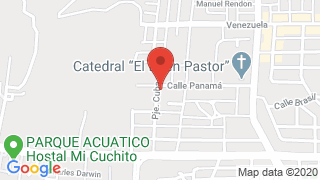Regions of Ecuador


Ecuador is a megadiverse country thanks to its location, in fact it has 4 Natural Regions, which mark quite a lot of its flora and fauna as well as environments and climates, knows each one of them with their respective provinces and capitals.
Ecuador's geographical location
Despite its small size, Ecuador is one of the countries with the greatest geographic diversity in the world. It boasts four main geographical regions: the East (the Amazon rainforest) to the east, the Sierra (Andean mountain range) in the center, the Coast (Pacific coast) to the west, and the Insular, where the majestic Galapagos Islands are west of the line Coastal. They were declared a World Heritage Site by Unesco since the densest biodiversity of the entire planet is found in Galapagos Islands. Know and learn, which the regions of Ecuador are:
Natural Regions of Ecuador
Its natural regions are the insular region, where the Galapagos Islands are located, located 1,000 km west of the Ecuadorian coast; the Sierra or Andean region, includes the entire central strip of the country where the Chimborazo volcano is located, the coast, occupies the entire coastline bathed by the Pacific Ocean; and the east, which covers the Ecuadorian Amazon
What is a region?
A region by definition is a territorial division, due to the geographical accidents of the place according to historical, social, and cultural influences. In Ecuador’s case there is a subdivisions called provinces, cities and parishes.
Coast or Coast Region
Coast: it comprises more than a quarter of the country, it is a geographical area that lies between the Pacific Ocean and the Andes Mountains. It extends over 640 km, through them crosses small hills and large plains. In the northern part, humid forests such as mangroves are found and in the southern part it has dry forests. This region offers great tourist attractions and for having a diverse vegetation from jungle to humid forest and includes semi-desert areas.
Andes Region, Interandina or Sierra Region
Sierra: it extends in a double row of mountains and a narrow uninhabited plateau known as the Inter-Andean valley. It is enclosed between two main branches of the Andes: and the Transandina or Amazon region. This is divided into three sub regions: North Sierra, Central Sierra and South Sierra. The Sierra has two very important mountain ranges the Cordillera Oriental and the Cordillera Occidental. We have three representative volcanoes in the Tungurahua, Cotopaxi and Chimborazo volcano mountains. A great variety of fauna that the Sierra region possesses but the most representative animal is the llama. Its rainy seasons extend from October to May with an annual temperature ranging between 111.5 ° C and 18 ° C, however the daily variation can be extreme hot days and very cold nights.
Amazon or Eastern Region
The east or Amazon region: At the east of the Andes, it is almost entirely covered with virgin jungle, it presents great orographic accidents a site where native flora and fauna develop. This region is also subdivided into the Upper and Lower East.
Insular Region or Galapagos
Insular: integrated by the Archipelago of Columbus, it includes six large islands and nine peguerias of volcanic origin. Independent of the continental framework, the Ecuadorian heritage also integrates the set of islands also crossed by the equinoctial line, which form the Archipelago of Colon or Galapagos, about 1000 km, in a straight line distance from the continental coasts following the equator line
More about the regions in Ecuador that may interest you:
- Ecuador Sierra Provinces
- Amazon Region Provinces
- Provinces of the coast of Ecuador from north to south
- Provinces and Capitals of Ecuador
- Provinces of Ecuador

Publicado en:
Publicado por:





